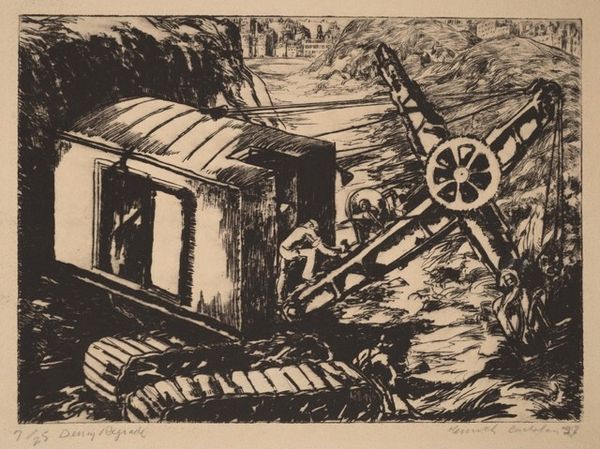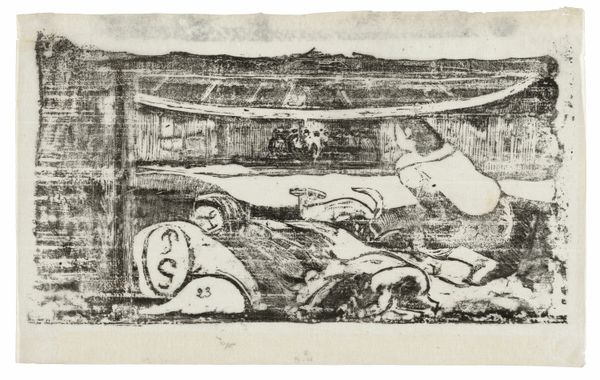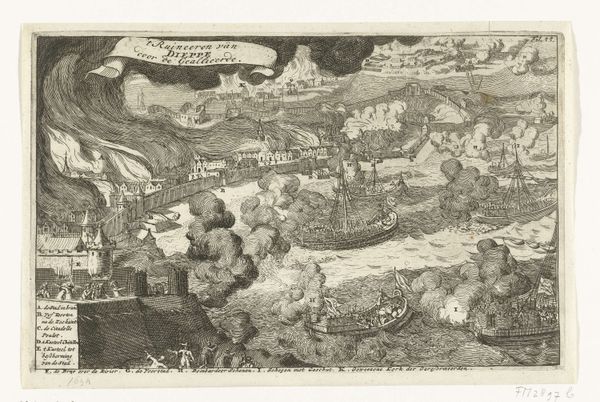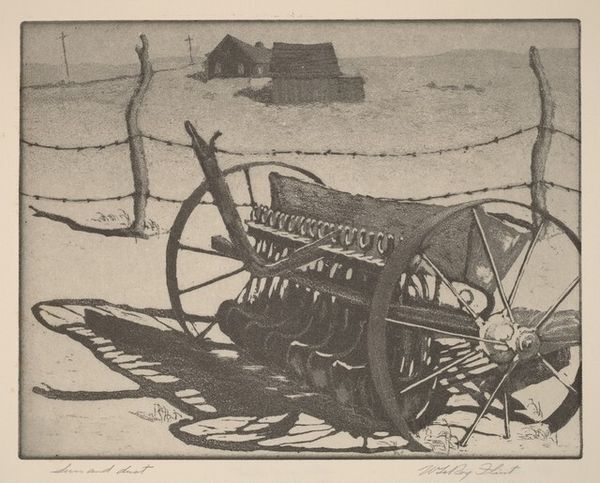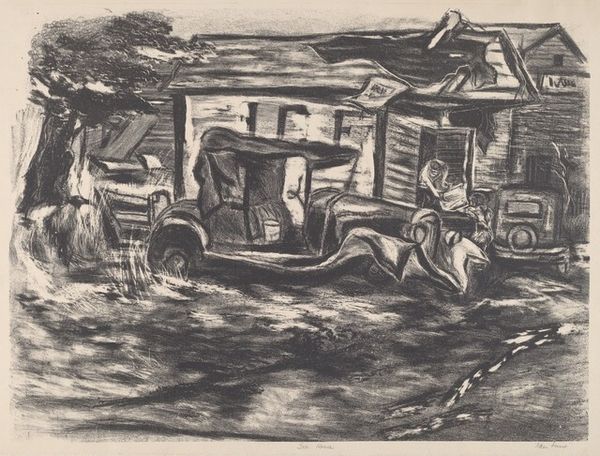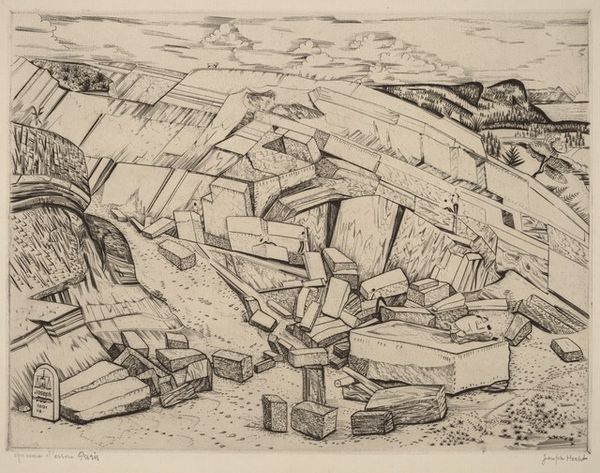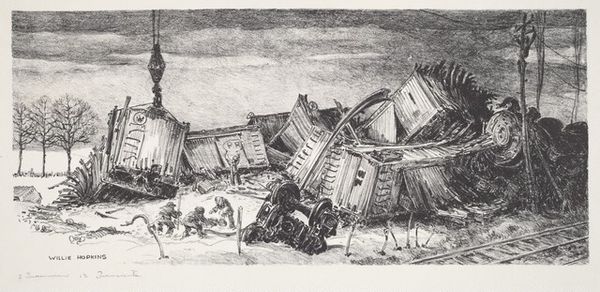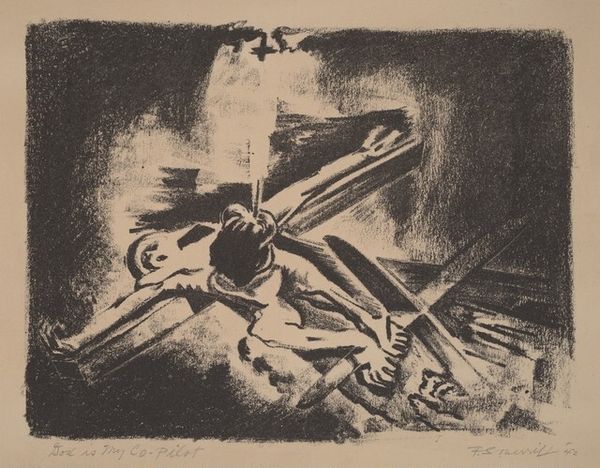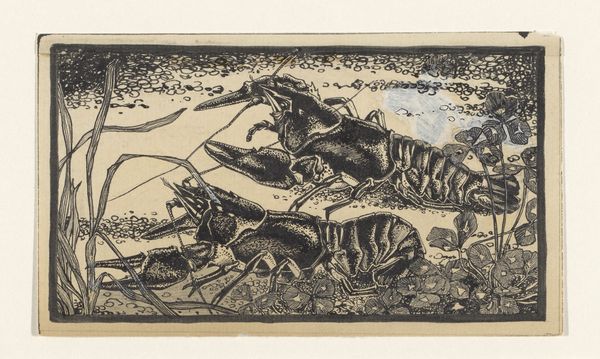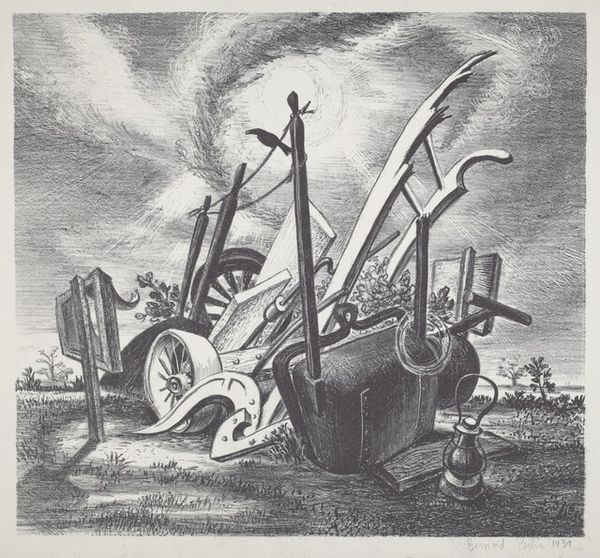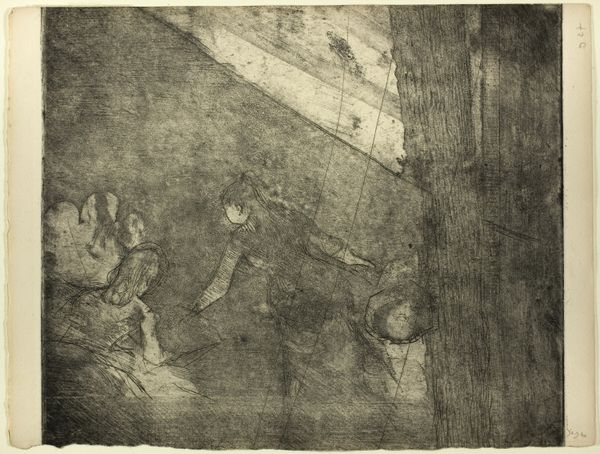
drawing, print, etching
#
drawing
# print
#
etching
#
landscape
#
geometric
#
line
Copyright: National Gallery of Art: CC0 1.0
Editor: Here we have Imre Reiner's 1932 etching, "The Giaour: Title Page." It has a melancholic, almost ruinous quality. What jumps out at me is how the geometric forms intersect with the organic shapes of the foliage. How do you interpret this work, particularly concerning its composition? Curator: The effectiveness of this print lies precisely in that tension. Observe the stark contrast between the sharp, deliberate lines forming the fallen architectural element and the more fluid, less defined lines of the surrounding vegetation. It’s a binary – geometric versus organic, order versus chaos – visualized through line quality. Editor: Yes, I noticed the interplay between the architectural ruin and foliage. It's very pronounced. Curator: Note, too, the tonal range. Reiner employs subtle gradations of grey to give depth to the foreground, drawing the eye, and rendering the background building a lighter tone to enhance depth and perspective. Editor: It's clever how he leads the viewer through the work. Curator: Indeed. Ask yourself, how does the formal arrangement create a dialogue about decay, ruin, or perhaps, resilience? What does the strategic use of line and tone communicate about the artist's intended meaning? Editor: I hadn't considered resilience, but it’s interesting how the foliage, despite the ruin, suggests a continuation. I was caught up on the idea of entropy and decay, thank you! Curator: Precisely. The work becomes a fascinating case study of binaries, contrasting order and disorder. Thank you for your thoughtful observations.
Comments
No comments
Be the first to comment and join the conversation on the ultimate creative platform.
